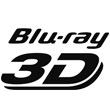 TV-specific active shutter 3D glasses may finally go the way of red-and-blue 3D glasses, as Panasonic, Sony and Samsung today announced an agreement to develop, adopt and promote an industry standard for universal 3D glasses technology. The new technology, which will debut in 2012, will still use the active-shutter technology but will ensure that 3D TVs from those manufacturers will all be able to use the same pairs of glasses.
TV-specific active shutter 3D glasses may finally go the way of red-and-blue 3D glasses, as Panasonic, Sony and Samsung today announced an agreement to develop, adopt and promote an industry standard for universal 3D glasses technology. The new technology, which will debut in 2012, will still use the active-shutter technology but will ensure that 3D TVs from those manufacturers will all be able to use the same pairs of glasses.
Active shutter glasses have largely been the technology of choice for most 3D TVs that have sold so far, but they’ve been maligned for their high price per pair, for only working with specific manufacturers’ 3D TVs, and for being reliant on a technology claimed by some to not be safe for kids.
Because of these shortcomings, perceived or real, a handful of manufacturers have created “universal 3D glasses” that work with any 3D TV. Today’s announcement of a universal 3D glasses standard, however, represents the first multi-manufacturer agreement.
According to a joint statement by the three manufacturers, the forthcoming universal 3D glasses will be backward compatible with 2011 3D active TVs. The glasses will be based on a new RF system active-shutter 3D that may not be tied only to 3D TVs, as the joint development will include “RF system protocols between consumer 3D active glasses and 3D displays such as televisions, personal computers, projectors and 3D theaters with Xpand active-shutter glasses. The standardization will also include multiple types of infrared system protocols between 3D active glasses and 3D displays, ranging from the protocols jointly developed by Panasonic and Xpand 3D, to the proprietary protocols of Samsung and Sony, respectively.”
The new universal 3D technology, of course, can be licensed to other companies to develop their own products.
Panasonic, Sony and Samsung plan to release the licensing options in September, with the new universal 3D glasses planned to be available in retail sometime in 2012.
